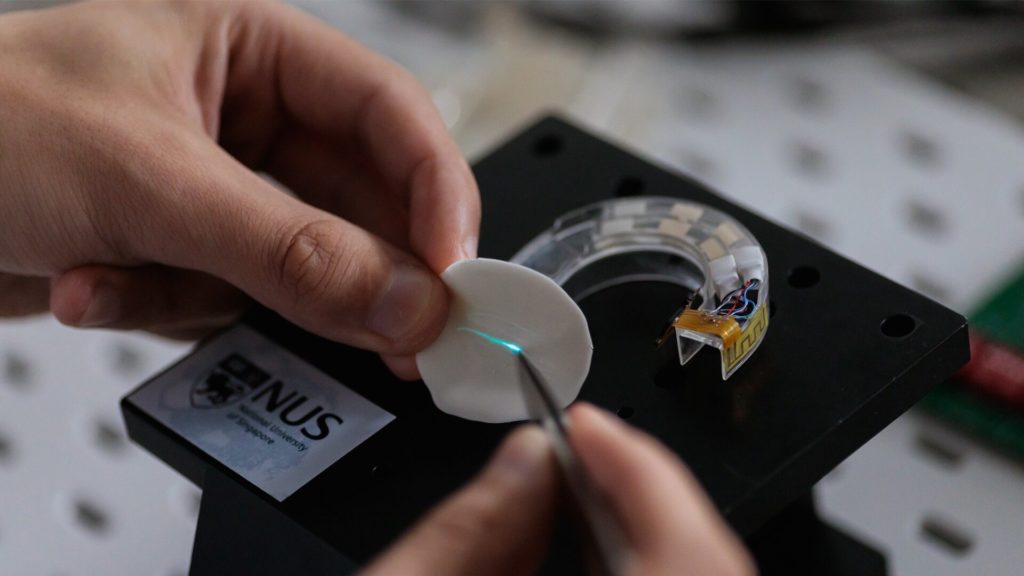Researchers from the National University of Singapore and Tsinghua University have developed an interactive
To create their interactive kappa, scientistsused a series of sensors with distributed optical fiber (mp-DOF) operating on mechanoluminescence. These sensors consist of an array of padded elastomeric waveguides. Phosphors of different colors react to pressure.
 Interactive cap. Image: National University of Singapore
Interactive cap. Image: National University of Singapore
The researchers built two of these sensors into a mouthguard,used by athletes to protect teeth from damage. The phosphors contained in the sensors are sensitive to mechanical stimuli. Under the influence of bites, they can form a signal that is transmitted to the computer.
The researchers combined their device onbased kappa with machine learning algorithms. The collected data was used to train a neural network to convert different bites into commands. A preliminary study showed that the system can successfully recognize over 98% of the signals.
Scientists believe that the created interface will helpimprove the lives of people with disabilities. For example, they can be used as an alternative to keyboards, touch screens and communication devices. In their work, the researchers showed that an interactive mouthguard can be integrated with computers, smartphones, and wheelchairs.
Read more:
Starlink signal hacked to be used as an alternative to GPS
NASA revealed the origin of Haumea - the most mysterious planet in the solar system
Physicists Break Standard Quantum Limit With 'Quantum Horror'
Cover image: National University of Singapore